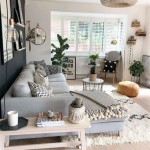Zen Home Decor Ideas: Creating a Tranquil Sanctuary
Zen home decor seeks to create a serene and balanced living space, drawing inspiration from Japanese Zen Buddhism. The core principle revolves around simplicity, natural elements, and a mindful approach to design. The goal is to transform a house into a sanctuary that promotes relaxation, clarity, and inner peace. Unlike other styles that may prioritize opulence or trends, Zen emphasizes functionality, minimalism, and a connection to nature. By decluttering both physical and mental space, Zen decor offers a pathway to mindful living.
The adoption of Zen principles in home decor involves a conscious effort to curate surroundings that are both aesthetically pleasing and conducive to well-being. This encompasses color palettes, furniture choices, the incorporation of natural light and materials, and an overall emphasis on creating a clutter-free environment. Implementing these elements effectively can transform a dwelling into a haven of tranquility and mindfulness.
Embracing Minimalism and Decluttering
Minimalism is a fundamental aspect of Zen decor. The principle of "less is more" is applied rigorously in every aspect of the design. This entails removing unnecessary items, focusing on essential pieces, and keeping surfaces clear. The absence of clutter allows for a sense of spaciousness and calm, reducing visual distractions and promoting mental clarity.
Decluttering is not merely about tidying up; it is a process of consciously evaluating possessions and determining their necessity and value. Items that do not serve a practical purpose or evoke positive emotions should be removed. This can involve donating unwanted items, selling them, or simply discarding them responsibly. The objective is to create a living space that is free from excess and fosters a sense of order and control.
Storage solutions are crucial for maintaining a minimalist aesthetic. Integrating storage into furniture or utilizing hidden storage compartments can effectively conceal clutter without compromising the overall design. Baskets, drawers, and shelves can be used to organize belongings and keep them out of sight. The key is to ensure that storage solutions are both functional and visually appealing.
Furniture should be carefully selected, prioritizing quality and functionality over quantity and ornamentation. Opting for pieces with clean lines and simple designs contributes to the minimalist aesthetic. Avoiding ornate details or excessive embellishments helps maintain a sense of calm and order within the space.
Incorporating Natural Elements and Materials
Natural elements play a significant role in Zen decor, connecting the interior space to the outdoors. This connection to nature is believed to have a positive impact on well-being, reducing stress and promoting a sense of harmony. The incorporation of natural light, natural materials, and greenery are essential components of this aspect of Zen design.
Natural light is a vital element in creating a Zen-inspired home. Maximizing natural light involves utilizing large windows, skylights, or strategically placed mirrors to reflect and amplify light. Avoiding heavy curtains or blinds that block natural light is crucial. Sheer curtains or blinds that allow diffused light to enter the space are preferable. The goal is to create a bright and airy environment that feels welcoming and uplifting.
Natural materials, such as wood, bamboo, stone, and cotton, are favored over synthetic materials. Wood can be incorporated through flooring, furniture, and decorative accents. Bamboo is a versatile material that can be used for flooring, screens, or even as a decorative element. Stone can be integrated through features like fireplaces or accent walls. Cotton, linen, and other natural fabrics are ideal for curtains, upholstery, and bedding.
Greenery is an integral part of Zen home decor. Plants not only add visual appeal but also purify the air and create a sense of tranquility. Low-maintenance plants, such as succulents, ferns, and bamboo, are popular choices. Bonsai trees, with their carefully cultivated shapes, are also a common element in Zen-inspired spaces. Arranging plants strategically throughout the home can create a sense of connection to nature and enhance the overall aesthetic.
Water features, such as small fountains or indoor ponds, can also contribute to the calming atmosphere of a Zen home. The sound of running water is known to have a soothing effect, promoting relaxation and reducing stress. These features can be incorporated into living rooms, bedrooms, or even bathrooms.
Creating a Harmonious Color Palette and Lighting Scheme
The color palette in Zen decor typically consists of neutral tones, such as white, beige, gray, and soft browns. These colors create a sense of calm and serenity, providing a backdrop for other elements in the room. Accent colors are often derived from nature, such as muted greens, blues, or earth tones. The key is to maintain a sense of balance and avoid overwhelming the space with bright or jarring colors.
White is a dominant color in Zen decor, representing purity and simplicity. It can be used on walls, ceilings, and furniture to create a bright and airy atmosphere. Beige and gray are also popular choices, offering a warmer and more inviting feel than stark white. Soft browns and earth tones can be incorporated to add a touch of natural warmth to the space.
Accent colors should be used sparingly to add visual interest without disrupting the overall sense of calm. Muted greens, blues, or earth tones can be used in accessories, such as pillows, throws, or artwork. The key is to choose colors that complement the neutral palette and create a sense of harmony.
Lighting plays a critical role in setting the mood in a Zen-inspired home. Soft, diffused lighting is preferred over harsh, direct light. Natural light should be maximized during the day, while artificial lighting should be used strategically to create a warm and inviting atmosphere in the evening. Table lamps, floor lamps, and recessed lighting are all popular choices.
Dimmer switches are essential for controlling the intensity of the lighting and creating different moods. Candlelight can also be used to add a touch of warmth and romance to the space. The key is to create a lighting scheme that is both functional and aesthetically pleasing, enhancing the overall sense of tranquility.
The principles of Zen decor extend beyond aesthetics; they embody a philosophy of mindful living. By embracing simplicity, incorporating natural elements, and creating a harmonious environment, households can cultivate a sense of peace and well-being. The focus on minimalism and decluttering not only transforms the physical space but also promotes mental clarity and reduces stress. The integration of natural light and materials connects the interior to the outdoors, fostering a sense of harmony with nature. The carefully chosen color palette and lighting scheme enhance the overall atmosphere, creating a sanctuary that is conducive to relaxation and contemplation.
:strip_icc()/cdn.cliqueinc.com__cache__posts__252404__zen-living-rooms-252404-1521148948714-image.700x0c-2234e0ef98cd409694773d3f82874544.jpg?strip=all)
12 Of The Most Zen Living Rooms You Ve Ever Seen

Ideas To Make Your Home Totally Zen

Zen Style Interior Design Ideas For A Serene Home Cafe

Total Zen Home Decor Ideas To Give Your A Relaxing Vibeonya

Zen Living Room On A Budget 12 Affordable Decor Ideas
:strip_icc()/cdn.cliqueinc.com__cache__posts__252404__zen-living-rooms-252404-1521148980049-image.700x0c-8fcb2af5edbe4cec9f3caed34ecf2f49.jpg?strip=all)
12 Of The Most Zen Living Rooms You Ve Ever Seen

The Quick Guide To Every Major Decorating Style Zen Interiors Apartment Interior Design Japanese

Meditation Room Ideas How To Create A Zen Den In Your Home Displate Blog

Inspiration 5 Interior Design Tips For A Contemporary Zen Style Home

Tips For Zen Inspired Interior Decor Lazy Loft
Related Posts







